Concept
Neon lights in Hong Kong are disappearing. The question remains, whether Hong Kong will disappear along with neon lights. How much does this change in architectural identity change our “local-ness”?
Nicknamed “Pearl of the Orient”, neon lights set Hong Kong on the map as an exotic Asian metropolis, comparable to Las Vegas (Tam, 2014). Both shared many similarities in shaping pedestrians’ experiences. They helped define the space of a building through its textual and visual signages, in addition to neon sign domination serving as a form of competition between businesses (Tam, 2014; Delfino, n.d.).
What differentiates Hong Kong from being the “Las Vegas of the East”, was its history. The meticulous use of colors depicting superstitious beliefs, Chinese calligraphy fonts, and English translation, all unconsciously transformed Hong Kong into a “third space” of “East meets West” (Bhabha, 1994).
The unique “third” space created by neon lights defined Hong Kong’s local identity. Living in a heterogeneous and contradictory city, neon signs provided an outlet for Hong Kong to thrive in a bubble that is neither Chinese nor British. The blinding and overwhelming effects of the neon were particularly amplified for the pedestrians along the congested streets. On the surface, its in-your-face nature overstimulated one’s visual experience. Looking deeper, the bright, colorful, and dynamic lighting of neon signs creates a palpable atmosphere of “ecstasy”, a heightened sensory and emotional experience ingrained in our memory (Bovino, 2021); reinforcing its bold and brash status in the metropolis, much like Hongkongers.
Ironically, it is our need for global modernization that led to Hong Kong shedding its neon “skin” and its “East-meets-West” bubble (Moro, 2020; Kwok & Coppoolse, 2017). As placeless international skyscrapers dominate Hong Kong, the urban vernacular space becomes more ambiguous, anonymous, and characterless (Abbas, 1997). Hong Kong’s once vibrant and colorful facade is being whitewashed into a homogenized, modern picture of “Asia’s World City”. Growing up in an age of disappearance and cultural pluralism, I experience Hong Kong’s neon lights through controlled film archives. They are starting to become less nostalgic. Instead, a sense of “unfamiliarity in the familiar” starts to take hold (Abbas, 1999).
Conducting Research
To better understand the current neon landscape of Hong Kong, ethnographic fieldwork and a historical archival review were conducted. While neon lights in Hong Kong still existed nowadays, their numbers significantly dwindled as compared to the last decades. Given its current limited presence, primary online research was conducted before secondary fieldwork research (Time Out Hong Kong, 2020; Mycroft, 2023).
Causeway Bay, Wan Chai, and Yau Tsim Mong district were the main locations of my research and video production. Each district provided an interesting perspective of the different types of neon lights specific to the location. Traditional neon lighting consisting of its specific color palette and neon tubing was predominantly found along the Yau Tsim Mong district, albeit being scarcely spaced out from each other (Fig. 1-3). Comparatively, LED billboard signs and animated signboards were found along the streets of Causeway Bay. Interestingly, a growing presence of neon-LED signboard hybrids comprised of neon light bulbs with LED signboards and LED signboards masquerading as neon signboards were observed (Fig 4-6).
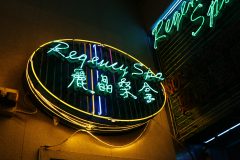
Figure 1. Regency Spa 麗晶桑拿 in Yau Ma Tei.
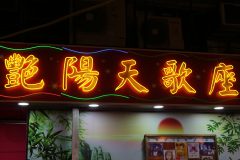
Figure 2. 艷陽天歌座 (Night Club) in Yau Ma Tei.
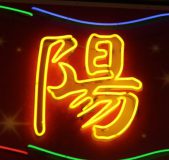
Figure 3. Traditional neon tubing at a local nightclub in Yau Ma Tei.
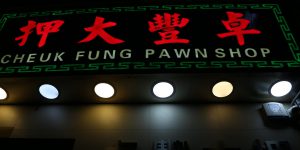
Figure 4. LED signboard with designs of traditional neon lighting attached to the walls of Cheuk Fung Pawn Shop in Wan Chai.
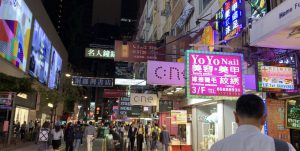
Figure 5. A mix of LED and non-LED advertisement boards along the streets of Hennessy Road, Causeway Bay.
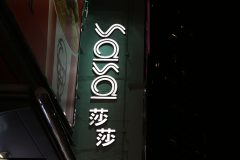
Figure 6. Sasa (莎莎香港) in Wan Chai.
Video Production
In terms of video components, there were two concepts I mainly liked to highlight – “unfamiliarity in the familiarity” and cultural disappearance.
In the “unfamiliarity in the familiarity”, I searched for multiple pictures of Hong Kong’s neon landscape during the late 1980s and compared them with the streets on site. Through the use of match cuts, and wide-angle shots, I wanted to capture how much the roads nowadays bore little to no resemblance to the streets in the past due to continuous changes. This reflects how even glaring neon lights that imprinted a permanent memory on us can be threatened to become temporary (Law, 2002).
To emphasize cultural disappearance, I selected my father as the voiceover narrator. Born and raised in Hong Kong and familiar with the neon landscape of the late 1990s, he could provide the audience with a perspective in a nostalgic memory of neon lights. By combining a voiceover narration with the main character’s visual struggle of capturing such a memory in today’s Hong Kong, the video emphasized the generational gap in experiencing a local icon. Time was also a recurring theme to emphasize the character’s race against time in her search for neon lights.
Reflection
Though the concept of disappearing neon lights is extensively researched and acknowledged, I wanted to explore the personal effects of its disappearance on subsequent generations. Although neon signs have not completely disappeared, the remaining ones are either too few and sporadic or have become faux-par versions of what they once were. However, even when facing disappearance, without truly witnessing the “golden age” of neon lights, I could not feel a particular sense of loss. Instead, much like the Hongkongers of the 21st century, an ambivalent feeling of detachment toward such intangible cultural heritage prevails.
References
Abbas, M. A. (1997). Hong Kong: Culture and the politics of disappearance.
Abbas, M. A. (1999). “Building on disappearance: Hong Kong architecture and colonial space”. The Cultural Studies Reader. London: Routledge, 146-166.
Bhabha, H. K. (1994). The Location of Culture. London: Routledge.
Bovino, Emily Verla. “Neon Crisis in Hong Kong”. The Architectural Review (21 September 2021), <https://www.architectural-review.com/essays/neon-crisis-in-hong-kong>.
Delfino, Andrew S. (n.d.). “A Bit Bright”: The Rise and Fall of Neon Signs in Las Vegas. <https://prizedwriting.ucdavis.edu/bit-bright-rise-and-fall-neon-signs-las-vegas>.
Kinolibrary. (2022, Jan 28). 1990s Hong Kong at Night, Neon Lights, 35mm [Video]. Youtube. https://youtu.be/MZo62IMaOEI.
Kinolibrary. (2018, Dec 20). 1960s Hong Kong, Neon Signs at Night, 35mm [Video]. Youtube. https://youtu.be/ZgIuALu0wTo.
Vivaldi, Antonio. (1959). The Four Seasons, Winter: I. Allegro non molto.
Kwok, Brain Sze-Hang, and Coppoolse, Anneke. (2017). “Hong Kong Skins: Signs and Screens in a Changing Cityscape” Visual Communication 17(1): 1-20.
Law, Lisa. (2002). “Defying Disappearance: Cosmopolitan Public Spaces in Hong Kong”. Urban Studies 39(9):1625 – 1645.
Moro, Francisco García. (2020). “The Death and Life of Hong Kong’s Illegal Façades. ARENA Journal of Architectural Research 5(1): 2.
Mycroft, Connor. “11 of the best neon signs still hanging in Hong Kong, and how to get to them before the glow is gone for good”. South China Morning Post (26 Feb 2023), <https://www.scmp.com/lifestyle/travel-leisure/article/3211444/11-best-neon-signs-still-hanging-hong-kong-and-how-get-them-glow-gone-good>.
NeonSignsHK. (n.d.). <https://www.neonsigns.hk/?lang=en>.
Chan, Shao-yi. (2018). “From Neon Signs to Skyscrapers: The Spectacle of Fluidity in Hong Kong’s Post/Modern Cityscape”. Hong Kong Studies 1(2): 143- 159.
Song, Ge. (2020). “Hybridity and singularity: a study of Hong Kong’s neon signs from the perspective of multimodal translation”. The Translator : 1-13.
Tam, Keith. (2014). “The Architectural of Communication: The Visual Language of Hong Kong’s Neon Signs”. Mobile M+ neonsigns.hk. <https://www.neonsigns.hk/neon-in-visual-culture/the-architecture-of-communication/?lang=en> .
Time Out Hong Kong. “Hong Kong’s best spots for neon signs”. Time Out. (8 May 2020). <https://www.timeout.com/hong-kong/things-to-do/hong-kong-best-neon-signs>.
781 words (excluding in-text citations)
Tan Magenta Elizabeth 3036063955
I enjoyed your video- there is a clear narative backed with nice cinematography and editing. Your investigation on the disappearing nature and hybridity of Hong Kong culture and how it is reflected in neon lights is well-researched and analyzed. I appreciate the close observation to the evolution of neon lights and bringing in a narrative monologue keeps the video engaging for its duration. Nice work!